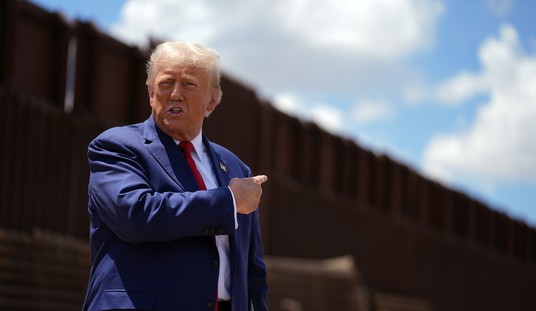News out of Tokyo finally grew bad enough for the Japanese government to act — sort of. Prime Minister Shinzo Abe declared a state of emergency earlier today after Tokyo had shown the signature increases of coronavirus community spread for several days. On its current path, Tokyo will hit 80,000 confirmed cases of COVID-19, surpassing New York City’s numbers in the same time frame, and with even less hospital capacity to deal with the crisis.
However, Abe’s state of emergency differs in one key aspect:
#breaking Prime Minister Shinzo Abe calls the coronavirus pandemic Japan's "biggest crisis since WWII." He says Tokyo, with 1,200 known infections currently, will have 10,000 infections in two weeks & 80,000 infections in one month if human contact is not reduced by 70-80% now. pic.twitter.com/JVklKmdQc3
— Will Ripley (@willripleyCNN) April 7, 2020
So what kind of closures has Abe ordered? Technically none, as Ripley explains and the Daily Mail reports. Japan has sent out a strongly worded memo to all Japanese citizens, and it expects them to have enough respect for authority to cooperate — and for peer pressure to do the rest:
The Japanese Prime Minister Shinzo Abe has declared a state of emergency to fight new coronavirus infections sweeping across major areas of the country.
The month-long state of emergency will target Tokyo and six other prefectures – accounting for 44% of Japan’s population – to ramp up defences against Covid-19. …
Mr Abe said: ‘We have decided to declare a state of emergency because we’ve judged that a fast spread of the coronavirus nationwide would have an enormous impact on lives and the economy.’
The emergency gives governors the authority to call on people to stay at home and businesses to close.
Further measures include guidance to schools on temporary closures and requests to close non-essential businesses and stores in addition to cancelling or postponing events and exhibits.
Mr Abe said he would not enforce a European-style lockdown and there are no plans to enforces penalties for ignoring the requests in most cases. Enforcement will rely more on peer pressure and respect for authority.
The voluntary shelter-in-place policies worked pretty well here, too, but didn’t quite meet the goal of cutting down interactions by the 70-80% necessary to stop community spread. Japan’s culture is quite different from ours, of course, and appeals to authority and solidarity will likely prove more successful. The problem for Japan in general and Tokyo in particular is density. People live too close to each other to have any hope of slowing down the spread without firm orders to remain separated for the next several weeks.
That should have informed Abe’s policy direction in the first place. They had an opportunity to slow or stop the coronavirus outbreak early, the New York Times notes, and this may be “too little, too late”:
Prime Minister Shinzo Abe, in announcing that the declaration would apply to Japan’s biggest population centers for the next month, painted an optimistic picture. By asking citizens to significantly reduce human-to-human contact, he said, “the expansion of infections can be turned to a decline in two weeks.”
But some experts said the state of emergency amounted to a tacit admission that the approach the country had stood by for months was no longer working, as Japan reached 3,906 confirmed cases on Tuesday, exactly double the number a week earlier.
“Japan has been screwing up,” said Kenji Shibuya, director of the Institute for Population Health at King’s College London. The confirmed cases, he said, are “just the tip of the iceberg,” adding that a surge of patients could cause Tokyo’s health care system to collapse.
Although Japan is now taking its virus fight a step further, the emergency move has limits of its own. The declaration will depend largely on voluntary compliance, and Mr. Abe emphasized that it was not a lockdown, and that public transit would continue. Prefectural governors can only request that people work from home and avoid going out.
A day earlier, Mr. Abe announced that the country would increase its testing capacity for the virus to 20,000 a day. So far, however, Japan has rarely conducted even half of the 7,500 tests it now has the ability to perform each day.
If Shibuya is correct, we could see a wildfire outbreak in Japan, with hospitalizations quickly overrunning health-care resources. It would be the final refutation of the herd-immunity hypothesis, which held that operating as normal would allow the population to quickly deal with COVID-19 and put off further waves as immunity quickly built up within the population. We’re seeing that tested in New York City by accident, mainly, thanks to the rapid outbreak there. Japan’s early numbers suggested that this approach might have merit, but now Abe has thrown in the towel, at least partly.
Now Japan will be another kind of experiment. Can voluntary measures stop the pandemic, or is government action required? The data has been contradictory in the US, with data supporting and negating both positions at times. The question will be what Abe will do if the cases keep escalating on a logarithmic scale — and at what point on that scale he will start issuing orders rather than “very strongly worded requests.”








